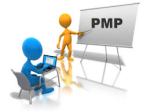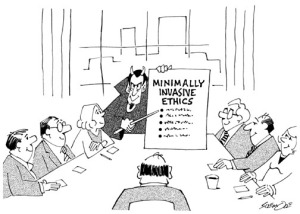 The PMP® credential is probably the oldest and most widely recognised project management credential in the world.
The PMP® credential is probably the oldest and most widely recognised project management credential in the world.
PMI® was not the first project management association, that honour goes to the European INTERNET (now IPMA), but it did lead the way in developing a project management examination and a supporting body of knowledge.
PMI was founded in October 1969 at the Georgia Institute of Technology as a non-profit organisation focused on the field of project management. By the time of the 1976 PMI Montreal Seminars/Symposium, the idea that ‘project management’ practices could be documented was being widely discussed along with the concept of project management as a profession.
These discussions continued through to 1981 when the PMI Board of Directors formally approved a project under the leadership of Matthew Parry to:
- Define the distinguishing characteristics of a practicing profession (ethics)
- The content and structure of the profession’s body of knowledge (standards)
- Recognition of professional attainment (accreditation)
The project team became known as the Ethics Standards and Accreditation (ESA) Management Group.
The results of the ESA project were published as a Special Report in the Project Management Journal, August 1983. The Special Report included:
- A code of Ethics and a procedure for enforcement
- A standard knowledge baseline consisting of six major ‘functions’, Scope, Cost, Time, Quality, HR and Communication. The term ‘functions’ was used, because most were named after the typical ‘functions’ (departments) of a large engineering company (now called knowledge areas).
- Recommendations for both the accreditation of courses provided by institutions (Universities) and individual certification.
This report subsequently served as the basis for PMI’s initial Accreditation and Certification programs. The first PMPs credentials awarded in 1984 and Western Carolinas University, Masters in Project Management degree was the first course accredited by PMI.
The initial version of the PMP exam was 40 questions in each of the 6 knowledge areas with at least 70% correct in each to pass. This version of the multi-choice exam presented 5 options and included a fair number of combination choices (e.g., “a and b”).
On the 25 March 1986, I joined PMI as member # 13,428 to tap into the knowledge PMI were developing through their Journals and standards to help with my work as a project management consultant. 28 years later I’m still an active PMI member.
In 1986/87 the PMI Board approved a second standards related project, to review and enhance the 1984 documents. In addition to expanding and enhancing the six original ‘functions’, the Risk and Contract/Procurement ‘functions’ were added along with a section on the ‘Project Management Framework’ which placed project management within the context of the wider environment and general management. This work was published as the ‘Project Management Body of Knowledge (PMBOK)’ in 1987.
The updated PMP exam was now 40 questions each for the 8 ‘functions’ with at least 70% correct in each to pass. It was 320 multiple choice questions that took 3 hours and 20 minutes in the morning for the first 160 questions and another 3 hours and 20 minutes in the afternoon for the second group of 160. Also around this time, PMI eliminated the “a and b” options and changed the exam from 5 options to 4.
Between 1991 and 1996, a major review of the PMBOK was initiated under the leadership of Bill Duncan resulting in the publication of ‘A Guide to the Project Management Body of Knowledge’, the first edition of the PMBOK® Guide. The important ‘Integration Knowledge area was added and the document extensively reorganised. The now familiar ‘processes were added to standardise the flow of information within a project (with inputs, tools and techniques and outputs described – most outputs becoming inputs to subsequent processes).
The PMP exam was changed again in the latter half of the 1990s. It went from a written test to computer based test, from 320 questions to 200 questions and the passing score went from 70% in each knowledge area to 61% overall. With the new format and ease of access to examination centres via the Thompson Prometric world-wide delivery system the PMP exam took off.
We passed our PMP examinations in 2001 and started developing our PMI courses, initially focussing on the new CAPM Credential, then the PMP credential – we are still developing and adapting our courses to stay aligned with changes in focus of the examination!
The 2000 and 2004 updates to the PMBOK® Guide set the pattern of regular 4 yearly updates. The 2004 (Third Edition) was the first time I contributed to the development process which has continued trough the 2008 and 2012 updates. The 2012 update included the new knowledge area of Stakeholder Management.
The regular updates required of an ANSI standard continue, with work on the 6th Edition currently in progress for publication in 2016, with Lynda Bourne leading work on the Stakeholder and Communication chapters.
Each update of the PMBOK® Guide flows through to updated PMP and CAPM examinations as do the less regular reviews of the PMP and the CAPM role delineation studies and examination specifications. So whilst the PMP examination is 30 years old, and the CAPM examination is 11 years old, both certifications remain a rigorous test of current project management knowledge.
The last set of significant changes to the exam delivery has been to change the passing assessment to remove the set pass/fail score and assess each test based on the use of psychometric analysis (see more)
Over the last 30 years, the PMBOK® Guide has largely shaped the world-wide view of what project management is; I know from my time working on the development of ISO 21500:2012 – Guidance on project management was heavily influenced by the PMI PMBOK. There are certainly other excellent BoKs produced in the UK, Japan and Germany to my certain knowledge; and the PRINCE2 certification is challenging the PMP credential for dominance; but everyone’s view of ‘project management’ is largely consistent and framed by the PMBOK® Guide.
So if you are a PMP holder or are planning on taking the PMP examination, I’m hoping this brief rundown on the history of the credential and its associated ‘body of knowledge’ provide some background on why the PMBOK® Guide and the examination are the way they are. It’s been a long journey which continues.
For more on the history of Project Management see: http://www.mosaicprojects.com.au/PM-History.html
For more on the PMP and CAPM examinations see: http://www.mosaicproject.com.au/







